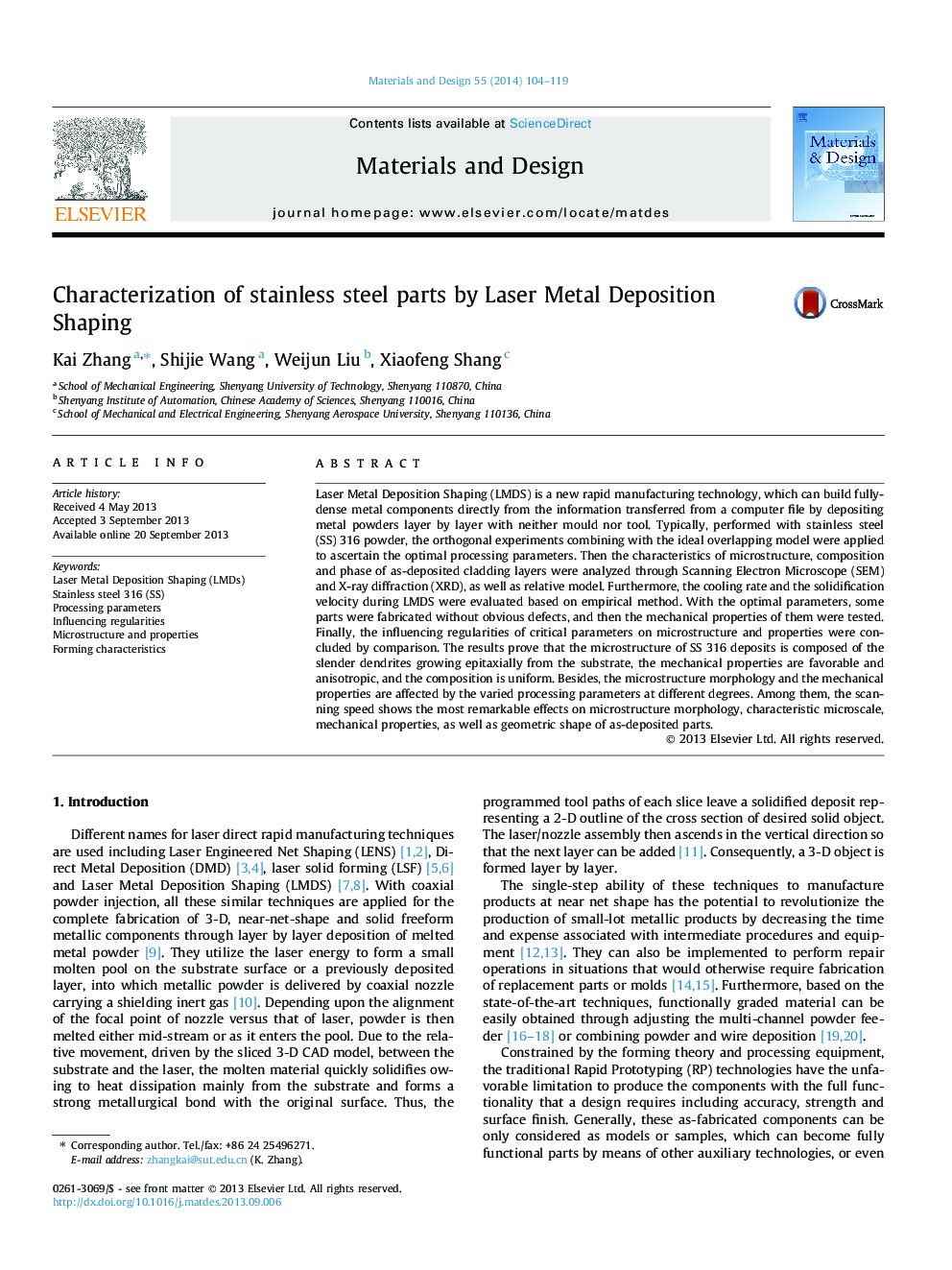| Article ID | Journal | Published Year | Pages | File Type |
|---|---|---|---|---|
| 829516 | Materials & Design (1980-2015) | 2014 | 16 Pages |
•Orthogonal design was combined with ideal overlap model to ascertain key parameters.•Cooling rate and solidification velocity were the reason for morphological features.•The influence rules of critical parameters on morphology and properties were deduced.•The characteristics of morphology determine the anisotropy of mechanical properties.
Laser Metal Deposition Shaping (LMDS) is a new rapid manufacturing technology, which can build fully-dense metal components directly from the information transferred from a computer file by depositing metal powders layer by layer with neither mould nor tool. Typically, performed with stainless steel (SS) 316 powder, the orthogonal experiments combining with the ideal overlapping model were applied to ascertain the optimal processing parameters. Then the characteristics of microstructure, composition and phase of as-deposited cladding layers were analyzed through Scanning Electron Microscope (SEM) and X-ray diffraction (XRD), as well as relative model. Furthermore, the cooling rate and the solidification velocity during LMDS were evaluated based on empirical method. With the optimal parameters, some parts were fabricated without obvious defects, and then the mechanical properties of them were tested. Finally, the influencing regularities of critical parameters on microstructure and properties were concluded by comparison. The results prove that the microstructure of SS 316 deposits is composed of the slender dendrites growing epitaxially from the substrate, the mechanical properties are favorable and anisotropic, and the composition is uniform. Besides, the microstructure morphology and the mechanical properties are affected by the varied processing parameters at different degrees. Among them, the scanning speed shows the most remarkable effects on microstructure morphology, characteristic microscale, mechanical properties, as well as geometric shape of as-deposited parts.
